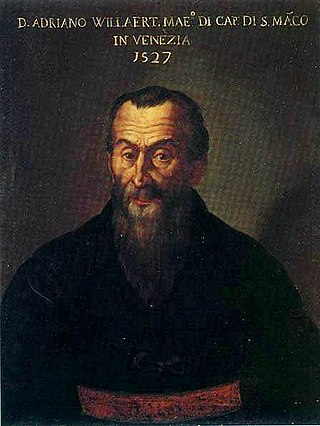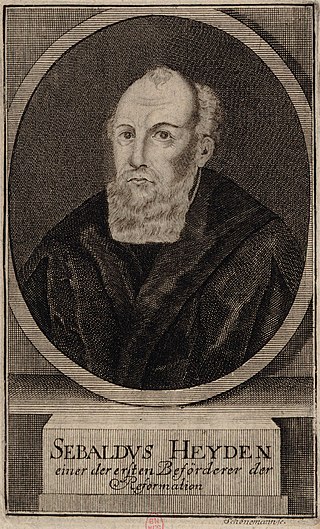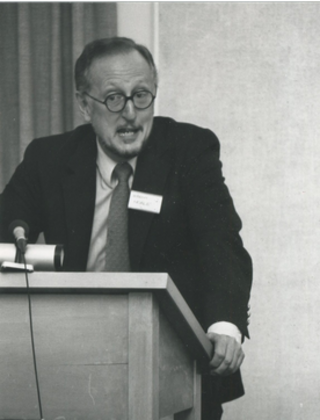Related Research Articles

Medieval music encompasses the sacred and secular music of Western Europe during the Middle Ages, from approximately the 6th to 15th centuries. It is the first and longest major era of Western classical music and followed by the Renaissance music; the two eras comprise what musicologists generally term as early music, preceding the common practice period. Following the traditional division of the Middle Ages, medieval music can be divided into Early (500–1150), High (1000–1300), and Late (1300–1400) medieval music.

Josquin Lebloitte dit des Prez was a composer of High Renaissance music, who is variously described as French or Franco-Flemish. Considered one of the greatest composers of the Renaissance, he was a central figure of the Franco-Flemish School and had a profound influence on the music of 16th-century Europe. Building on the work of his predecessors Guillaume Du Fay and Johannes Ockeghem, he developed a complex style of expressive—and often imitative—movement between independent voices (polyphony) which informs much of his work. He further emphasized the relationship between text and music, and departed from the early Renaissance tendency towards lengthy melismatic lines on a single syllable, preferring to use shorter, repeated motifs between voices. Josquin was a singer, and his compositions are mainly vocal. They include masses, motets and secular chansons.

Adrian Willaert was a Flemish composer of High Renaissance music. Mainly active in Italy, he was the founder of the Venetian School. He was one of the most representative members of the generation of northern composers who moved to Italy and transplanted the polyphonic Franco-Flemish style there.

A madrigal is a form of secular vocal music most typical of the Renaissance and early Baroque (1600–1750) periods, although revisited by some later European composers. The polyphonic madrigal is unaccompanied, and the number of voices varies from two to eight, but usually features three to six voices, whilst the metre of the madrigal varies between two or three tercets, followed by one or two couplets. Unlike the verse-repeating strophic forms sung to the same music, most madrigals are through-composed, featuring different music for each stanza of lyrics, whereby the composer expresses the emotions contained in each line and in single words of the poem being sung.
Gustave Reese was an American musicologist and teacher. Reese is known mainly for his work on medieval and Renaissance music, particularly with his two publications Music in the Middle Ages (1940) and Music in the Renaissance (1954); these two books remain the standard reference works for these two eras, with complete and precise bibliographical material, allowing for almost every piece of music mentioned to be traced back to a primary source.
Jean Richafort was a Netherlandish composer of the Renaissance, a member of the third generation of the Franco-Flemish School.

Franchinus Gaffurius was an Italian music theorist and composer of the Renaissance. He was an almost exact contemporary of Josquin des Prez and Leonardo da Vinci, both of whom were his personal friends. He was one of the most famous musicians in Italy in the late 15th and early 16th centuries.
Musica ficta was a term used in European music theory from the late 12th century to about 1600 to describe pitches, whether notated or added at the time of performance, that lie outside the system of musica recta or musica vera as defined by the hexachord system of Guido of Arezzo.

The Portrait of a Musician is an unfinished painting widely attributed to the Italian Renaissance artist Leonardo da Vinci, dated to c. 1483–1487. Produced while Leonardo was in Milan, the work is painted in oils, and perhaps tempera, on a small panel of walnut wood. It is his only known male portrait painting, and the identity of its sitter has been closely debated among scholars.
Jean L'Héritier was a French composer of the Renaissance. He was mainly famous as a composer of motets, and is representative of the generation of composers active in the early to middle 16th century who anticipated the style of Palestrina.

Sebald Beham (1500–1550) was a German painter and printmaker, mainly known for his very small engravings. Born in Nuremberg, he spent the later part of his career in Frankfurt. He was one of the most important of the "Little Masters", the group of German artists making prints in the generation after Dürer.

A paraphrase mass is a musical setting of the Ordinary of the Mass that uses as its basis an elaborated version of a cantus firmus, typically chosen from plainsong or some other sacred source. It was a common means of mass composition from the late 15th century until the end of the 16th century, during the Renaissance period in music history, and was most frequently used by composers in the parts of western Europe which remained under the direct control of the Roman Catholic Church. It is distinguished from the other types of mass composition, including cyclic mass, parody, canon, soggetto cavato, free composition, and mixtures of these techniques.

The Missa L'homme armé super voces musicales is the first of two settings of the Ordinary of the Mass by Josquin des Prez using the famous L'homme armé tune as their cantus firmus source material. The setting is for four voices. It was the most famous mass Josquin composed, surviving in numerous manuscripts and print editions. The earliest printed collection of music devoted to a single composer, the Misse Josquin published by Ottaviano Petrucci in 1502, begins with this famous work.
The Missa Sine nomine is a setting of the Ordinary of the Mass by Renaissance composer Josquin des Prez. It is a work of his maturity, probably dating from the period after he returned to Condé-sur-l'Escaut in 1504. It is one of Josquin's only masses not to be based on pre-existing material, and like the Missa ad fugam, it is a canonic mass.
The decade of the 1530s in music involved some significant events, publications, compositions, births, and deaths.
Nationality words link to articles with information on the nation's poetry or literature.

Sebald Heyden was a German musicologist, cantor, theologian, hymn-writer and religious poet. He is perhaps best known for his De arte canendi which is considered to have had a major impact on scholarship and the teaching of singing to young boys. He wrote hymns such as "O Mensch, bewein dein Sünde groß". It has been speculated that Heyden was the world's first true musicologist.

David Fallows is an English musicologist specializing in music of the late Middle Ages and early Renaissance, as well as the performance practice of music. He is a leader in fifteenth-century music studies, particularly secular song, Guillaume Dufay, and Josquin des Prez, both the subject of landmark biographies Fallows has written.
Inviolata, integra et casta es Maria is a motet by Josquin des Prez. One of his most famous compositions, it divides the cantus firmus into three sections and is scored for five voices—two carrying the canonical melody and three free.

Jeremy Noble was an English musicologist and music critic. His career comprised two fields, musicological scholarship and music criticism. In the former, he focused on early English music, Venetian music and particularly the life and work of Renaissance composer Josquin des Prez. His colleague Stanley Sadie noted that "Although only a fraction of his research has been published, the breadth and depth of his knowledge and his generosity towards fellow scholars have made him an important participant in late 20th-century musicology." As an "acute and often acerbic critic," Noble held posts at The Times and The Sunday Telegraph.
References
- ↑ Judd, Cristle Collins (2 November 2006). Reading Renaissance Music Theory: Hearing with the Eyes. Cambridge University Press. p. 91-. ISBN 978-0-521-02819-6 . Retrieved 4 April 2012.
- ↑ DeFord, Ruth I. "Sebald Heyden (1499–1561): The first historical musicologist?" (PDF). Hunter College and The Graduate Center of The City University of New York. Retrieved 4 April 2012.
- ↑ International Association of Music Libraries. United Kingdom Branch (2005). Brio. The Branch. pp. 10–15. Retrieved 4 April 2012.
- 1 2 Haar, James; Corneilson, Paul Edward (24 August 1998). The Science and Art of Renaissance music. Princeton University Press. p. 178. ISBN 978-0-691-02874-3 . Retrieved 4 April 2012.
- ↑ Smith, Anne (30 March 2011). The Performance of 16th-Century Music: Learning from the Theorists. Oxford University Press. p. 29. ISBN 978-0-19-974262-2 . Retrieved 4 April 2012.
- ↑ Houle, George (June 2000). Meter in music, 1600-1800: performance, perception, and notation. Indiana University Press. p. 3. ISBN 978-0-253-21391-4 . Retrieved 4 April 2012.